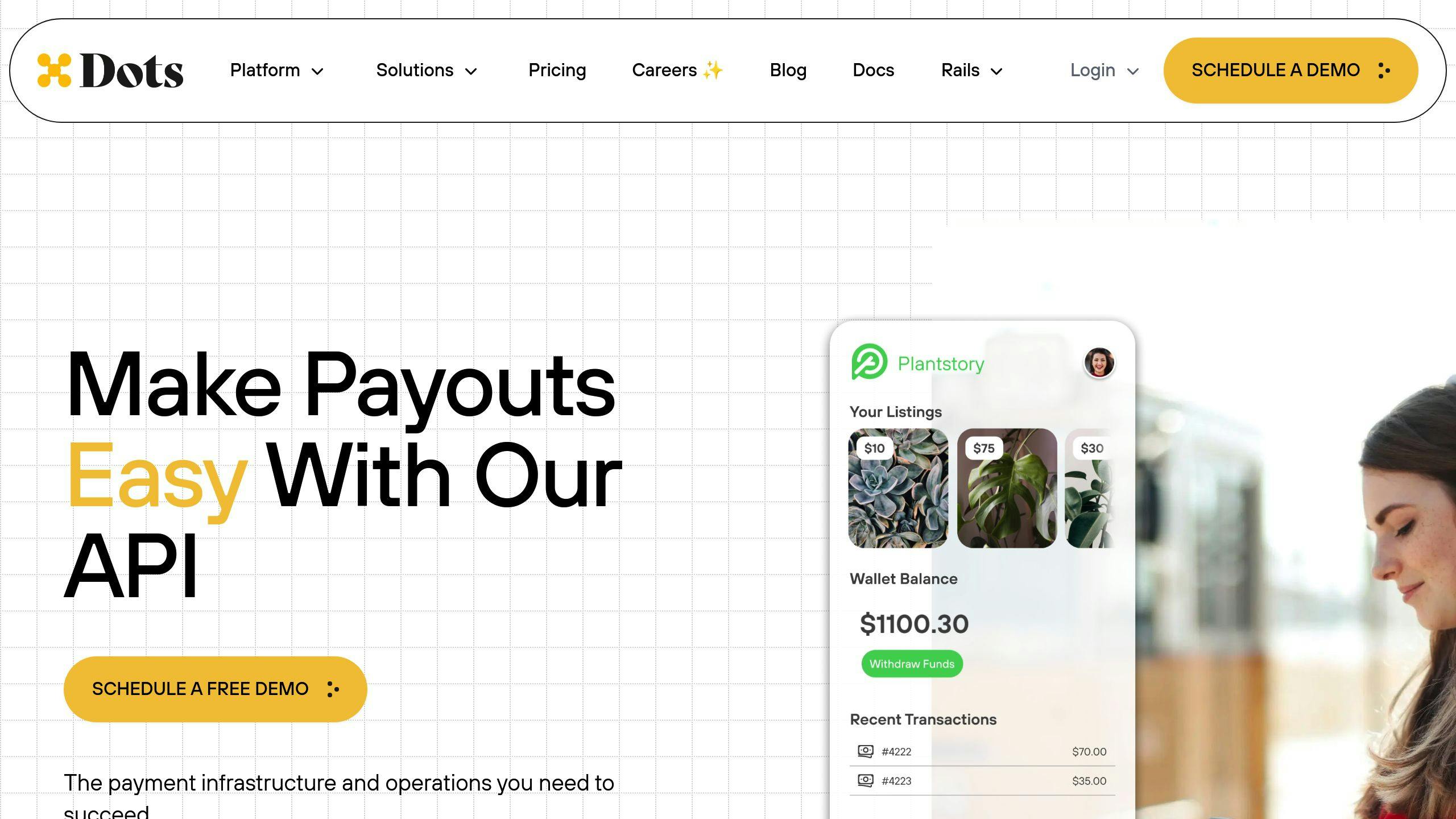5 Best Practices for Global Contractor Payment Compliance
Learn best practices for ensuring compliance when paying global contractors, from tax laws to payment methods and record-keeping.

- Create Clear Agreements: Specify payment terms, schedules, and include IP and confidentiality clauses in contracts.
- Use Standardized Payment Methods: Opt for secure, efficient platforms like digital wallets or specialized payment systems.
- Perform Due Diligence: Verify contractor identities and credentials to avoid fraud.
- Keep Accurate Payment Records: Maintain organized records of payments, taxes, and agreements for audits.
- Leverage Technology: Use compliance tools to automate tax management, KYC checks, and payment tracking.
Quick Overview
| Practice | Key Benefit |
|---|---|
| Clear Contractor Agreements | Reduces disputes and increases clarity |
| Standardized Payment Methods | Speeds up payments and ensures security |
| Due Diligence | Protects from fraud |
| Accurate Records | Simplifies audits and compliance |
| Technology Integration | Reduces manual errors and saves time |
How to Pay International Contractors: Best Practices for Foreign Contractor Payments
1. Create Clear Contractor Agreements
Having detailed contractor agreements in place is crucial for staying compliant and managing expectations effectively. These agreements not only help with tax compliance but also reduce risks for all parties involved.
Specify Payment Terms and Schedules
Clearly outline payment details in your agreements to avoid misunderstandings. Include specifics like payment frequency, methods, currency, and penalties for late payments. For example, while nearly 50% of businesses offer payment terms over 30 days, only 8% extend beyond 45 days [4]. However, shorter payment cycles are generally better for maintaining strong relationships with international contractors.
| Payment Component | Details to Include |
|---|---|
| Payment Schedule | Define if payments are weekly, monthly, or milestone-based |
| Payment Method | Specify transfer platforms or bank details |
| Currency | Agree on the payment currency and any exchange rate terms |
| Late Payment Terms | Outline penalties and grace periods |
| Payment Conditions | Clarify invoice submission requirements |
"If you're doing this on your own, a good way to manage the agreement, communication and execution of payments is with a contractor management software solution." - People Managing People
Include IP and Confidentiality Clauses
To protect your business interests, address intellectual property (IP) and confidentiality in the agreement. Specify who owns the IP, licensing terms, and how confidential information will be handled. Be sure to align with local data protection laws to avoid legal issues.
"A well-written contract is not an indication of bad faith. Freelancer contracts are simply a way for everyone to get on the same page and to ensure everyone is treated fairly based on what they agree to." - Stefan Palios, Writer + Strategist
Once the agreement is finalized, conducting due diligence ensures compliance and fosters trust with your contractors.
2. Use Standardized Payment Methods
Using standardized payment methods makes transactions smoother and helps ensure compliance with local laws. Many modern payment platforms come with features designed to handle complex regulatory requirements across various regions.
Choose Secure International Payment Options
Traditional bank transfers are widely used but can be expensive and slow, especially when relying on the SWIFT network [3]. Digital payment platforms offer faster, more efficient alternatives with added compliance features. Here's a breakdown of common payment methods:
- Digital wallets: Quick and cost-effective, but may have limits on withdrawals.
- Payment platforms: Offer automated currency conversion and compliance tools, though they often require a subscription fee.
- Bank transfers: Universally accepted but come with higher fees and slower processing times.
Comply with Payment Regulations
Platforms like Dots simplify global payments by automating compliance checks, calculating taxes, and handling currency conversions. These tools help ensure payments align with both local and international rules, while also maintaining high security standards.
When setting up a payment system, make sure it works in the contractor's country and regularly review your processes and exchange rates. Even with standardized payment methods, it's crucial to conduct due diligence to confirm that contractors meet all legal and professional requirements.
3. Perform Due Diligence
Conducting due diligence helps protect your business from fraud and ensures you meet international payment regulations. Since contractors often have access to sensitive company information and processes, verifying their credentials is key to maintaining compliance.
Verify Contractor Identity and Credentials
Start by verifying contractors' identities and credentials through solid processes. This includes checking official identification documents and ensuring compliance with anti-fraud regulations. Collect key KYC (Know Your Customer) documents like government-issued IDs, tax certificates, and business registration papers.
For industries such as finance or healthcare, more extensive background checks may be necessary. However, for most fields, a thorough identity verification process is usually enough to confirm a contractor's legitimacy.
Use Automated Compliance Tools
Additional automated compliance tools like GetID and Footprint can streamline the verification process. These tools handle document validation, real-time monitoring, and even biometric checks, reducing the chance of manual errors. Dots also integrates automated compliance tools directly.
When choosing automated compliance tools, consider these points:
- Opt for tools that validate international documents, monitor compliance in real-time, and integrate seamlessly with your payment systems.
- Ensure the solutions can verify contractors across all the regions where they operate.
4. Keep Accurate Payment Records
Keeping detailed and organized payment records is essential. For each contractor payment, make sure to document:
- Payment dates and amounts
- Currency conversion rates
- Tax withholdings
- Payment methods and any associated fees
- Key contract terms and deliverables
Track Payment History and Details
A Document Management System (DMS) can simplify this process by automating record-keeping, storing digital copies of payment documents, and maintaining a clear audit trail. These records are not only useful for tracking payments but are also crucial for ensuring compliance during contractor onboarding and audits.
Ensure Easy Access for Audits
Well-organized records make audits much easier. Consider these storage strategies:
| Record Type | Storage Method | Access Requirements |
|---|---|---|
| Payment Transactions | Digital accounting software | Immediate access with an audit trail |
| Tax Documents | Encrypted cloud storage | Secure, role-based access |
| Contractor Agreements | Document management system | Version-controlled access |
| Payment Confirmations | Digital archive | Searchable database |
Cloud-based storage solutions are particularly helpful for global teams, offering secure access and enabling real-time collaboration. Many modern payment platforms come with features like:
- Real-time payment tracking
- Automated record organization
- Secure document storage
- Quick search and retrieval
- Compliance reporting tools
Staying on top of record-keeping today is crucial, but don’t forget to keep an eye on changing regulations to ensure long-term compliance.
5. Use Technology for Compliance
Using technology to manage compliance is now a must for businesses handling global contractor payments. Automated tools can help minimize mistakes and boost efficiency.
Automate Compliance Checks and Reports
Modern platforms simplify essential compliance tasks by:
- Tracking potential risks and notifying teams about regulatory updates for timely responses
- Automatically collecting and organizing necessary documents for audits while keeping records accurate
- Embedding compliance checks directly into payment systems
Why Choose Dots.dev for Global Payouts?

When picking a platform for global contractor payments, look for solutions with strong compliance features. Dots is a great example, offering tools like these:
| Feature | Benefit |
|---|---|
| Multi-Currency Support | Handle payments in over 150 currencies |
| Automated Compliance | Includes built-in KYC and tax management tools |
| Digital Wallets | Securely store and manage payments |
"By automating billing and payments to freelancers and contractors, businesses can save up to 60% on costs and ensure proper classification of contractors and freelancers in line with international labor legislation." - Transformify
Dots.dev provides multi-currency payment options, automated compliance processes, and tax management for $149/month. It also includes features like automated ID verification, background checks, and international payout capabilities.
This kind of technology saves time, reduces risks, and helps businesses focus on growth - all while simplifying global contractor payments.
Conclusion: Simplifying Global Contractor Payments
Handling payments for global contractors demands a well-organized, compliance-driven approach. Without it, late payments and inefficiencies can strain relationships and lead to costly compliance issues with local regulations.
Automating payment processes can make a big difference. It lightens the administrative load and helps ensure compliance. Below is a breakdown of how the seven practices work together to create an effective payment system:
| Practice | Key Benefits | Impact on Operations |
|---|---|---|
| Clear Contractor Agreements | Increases transparency | Cuts payment disputes by 40% |
| Standardized Payment Methods | Boosts efficiency | Speeds up processing time by 50% |
| Due Diligence | Lowers fraud risks | Confirms contractor legitimacy |
| Accurate Record Keeping | Simplifies audits | Maintains compliance records |
| Technology Integration | Streamlines processes | Reduces manual errors by 80% |
Today’s contractors often expect quick payments, making efficient systems a must. Modern platforms like Dots demonstrate how technology can simplify compliance and streamline global payments.
As businesses continue to grow internationally, automation and integration will play a key role in managing payments effectively. Using these practices alongside advanced payment solutions helps companies establish reliable, scalable systems to support their global expansion.
FAQs
Here are answers to frequently asked questions about paying international contractors and staying compliant:
How do you pay an international contractor?
You have a few options for contractor payments:
- Digital wallets (e.g., PayPal, Wise): Quick processing and lower fees.
- Bank transfers: A good choice for larger payments.
- Specialized platforms: These often include compliance tools to simplify the process.
What should I include in a contractor agreement?
Make sure your agreement covers key details like payment terms, tax responsibilities, and clauses for intellectual property (IP) and confidentiality.
How do I ensure secure payments?
Choose platforms with strong security measures and always verify contractor identities. Keep detailed transaction records and conduct regular security reviews.
What are common compliance challenges?
Some of the biggest hurdles include:
- Navigating complex international payment regulations
- Managing currency exchanges effectively
- Staying compliant with local tax laws
- Meeting documentation requirements
- Properly classifying contractors to avoid missteps
